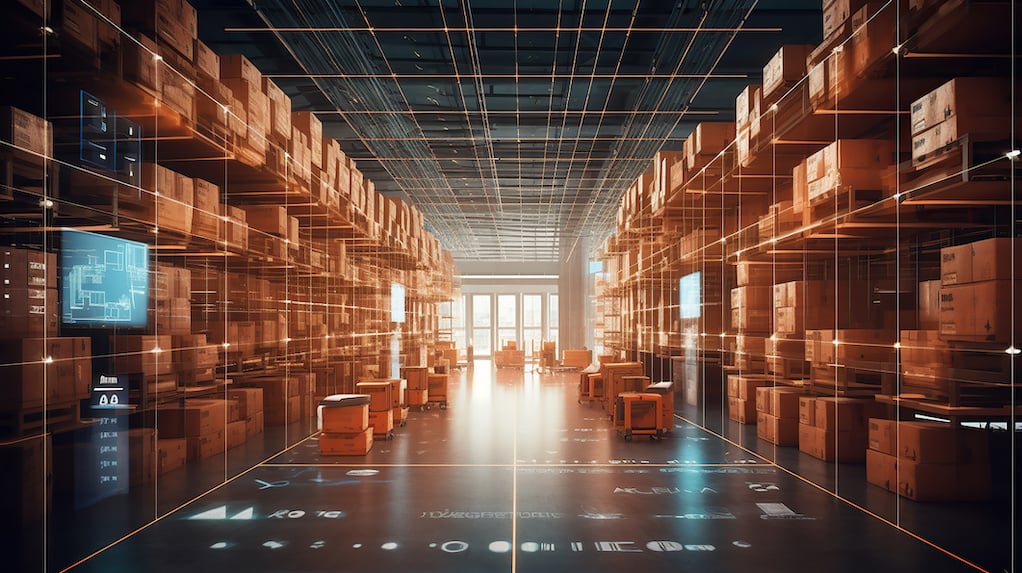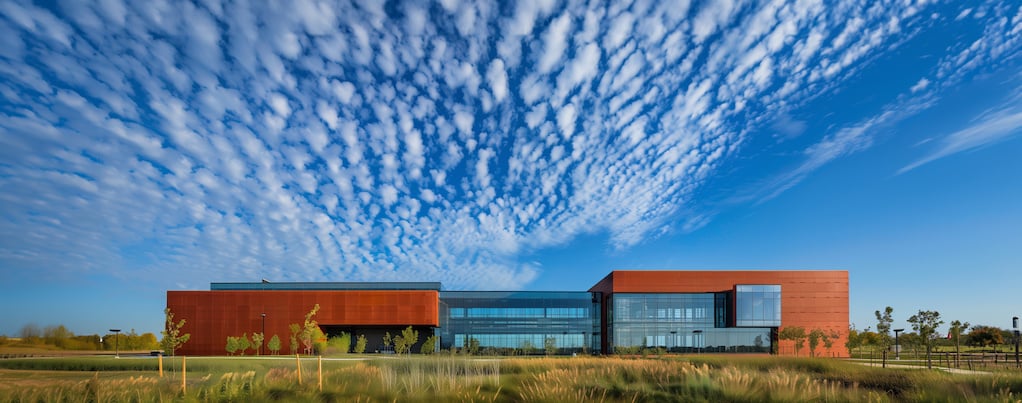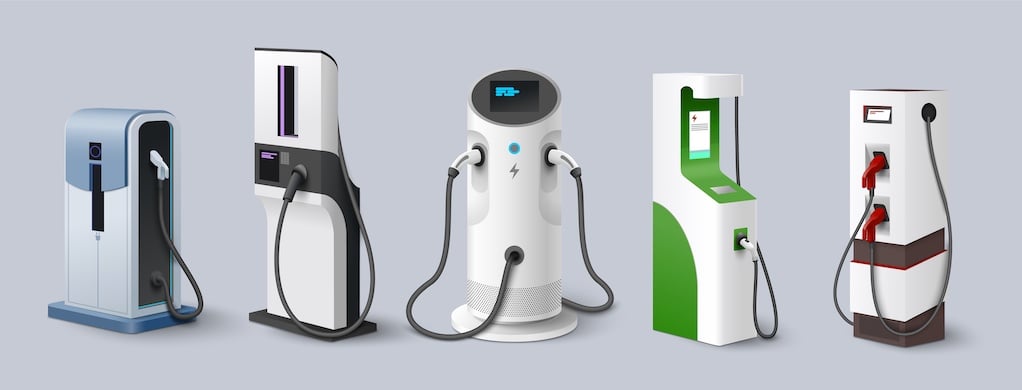In the country’s industrial sector, advanced manufacturing is swiftly becoming the cornerstone of progress.
It’s a clear pivot towards both creating and integrating the smartest technologies—think AI, robotics, and EVs—to not only enhance how factories operate but redefine them.
The driving forces behind this momentum are multifaceted. This isn’t just about a shift in preferences; it’s about redefining the tools our country relies on and creating facilities that function smarter, faster, and more efficiently in a landscape where innovation is king.
So let's dive into advanced manufacturing in the industrial sector and the combination of unique drivers paving the way for it's long-term success. Stay on top of the latest evolution in the CRE world.
Advanced Manufacturing Facilities
In this context, 'advanced manufacturing' dualistically refers to both the innovative technologies—such as AI, robotics, and advanced materials management—being integrated to enhance and expedite factory operations, and the sophisticated products these technologies produce.
Often, this means things like semiconductors, solar panels, electric vehicles, and pharmaceuticals.
|
“The categories these products represent: high tech/digitalization, automotive/transportation, energy, and biomanufacturing are “capturing over 90% of the major investments pledged since 2020.” GlobeSt |
Because of the unique drivers associated with these sectors, investor interest has obviously been peaked and it looks like there will be consistent, long-term motivation to continue the sector's growth.
Investment figures in advanced manufacturing are impressive, starting at $100 million since 2020, with a further $400 billion forecasted for future commitments. And as high-tech is gradually integrated in new facilities, it is poised to take over manufacturing while devaluing alternatives.
|
“Construction related to the high tech, automotive, energy and biomanufacturing sectors will add 6% to 13% to the nation’s existing manufacturing space within the decade.” GlobeSt |
Even as other warehouse construction has slowed in accordance with rising interest rates, there is still persistent interest in advanced manufacturing developments.
This surge in developments is not just modernizing factories; it is also expected to significantly boost job numbers and manufacturing space across the nation as we move into the next decade.
The investment funds are expected to generate over 210,000 jobs and create at least 250 million square feet of new industrial space by the year 2030. But that’s not really a happy accident…
Advanced Manufacturing Drivers
The promise of the sector is underscored by immense financial investments and legislative support. Economic policies, global market trends, and a national push towards self-reliance have all set the stage for the era of advanced manufacturing.

The CHIPS Act
The passing of the CHIPS and Science Act is a critical factor in this investment surge. The Act represents a significant commitment by the U.S. government, with an investment of $52 billion intended to expand the country's science and technology sector. This move is not only about enhancing the U.S. competitive edge globally but also about reducing the nation's dependency on foreign manufacturing powers like China.
|
“The CHIPS and Science Act set aside $50 billion for semiconductor manufacturing and R&D, including $39 billion in direct incentives.” GlobeSt |
The CHIPS Act has implications beyond just semiconductor production; it's intended to foster a robust and self-reliant advanced manufacturing sector. It catalyzes growth in related industries as well, such as the data center industry, which has seen rapid growth due to the widespread adoption of AI tools by individuals and businesses. Read more about it in Ways Artificial Intelligence (AI) is Changing Commercial Real Estate.
Onshoring and Nearshoring
By funding semiconductor manufacturing on U.S. soil, the act effectively encourages onshoring, which had been growing traction since COVID-19.
The pandemic underscored the fragility of long, complex supply chains and the risks of heavy reliance on overseas manufacturing.
Companies are increasingly recognizing the benefits of bringing manufacturing operations closer to home (onshoring) or to neighboring countries (nearshoring) as a way to mitigate these risks, improve supply chain resilience, and respond more swiftly to market demands.

And on top of gaining national prowess in technology and creating American jobs, onshoring
Increases the pressure for advanced manufacturing to have a presence in the US.
Having a strong manufacturing base within the country can be a matter of economic security, reducing dependence on foreign suppliers, especially for critical technologies and essential goods. Onshoring can help ensure that the development and application of these technologies occur within the U.S., reinforcing national capabilities and expertise in these areas.
Benefits to Specific Regions
The South and Midwest of the United States are particularly benefiting from this trend.
These areas are seeing the formation of new manufacturing clusters and the expansion of existing ones. This regional growth is fueled by the availability of space, favorable economic policies, a skilled workforce, and sometimes lower costs compared to traditional manufacturing hubs.
A record number of projects in advanced manufacturing are either in progress or poised to begin, which will likely create jobs and stimulate local economies.

Growth in Neighboring Countries
The emphasis on nearshoring is also benefiting Canada and Mexico. The proximity to the United States makes them attractive for businesses looking to keep operations close but still capitalize on potentially lower costs and trade agreements like the United States-Mexico-Canada Agreement (USMCA).
U.S. cities along the Mexican border are likely to see a significant uptick in manufacturing activities as they serve as strategic points for cross-border trade and supply chain integration.
Inflation Reduction Act and Other Subsidies
The Inflation Reduction Act, along with other subsidies and legislative measures, are also significant catalysts for the burgeoning interest in advanced manufacturing in the United States, particularly in sectors aligned with green technology and sustainability.
In accordance with evolving green technology and meeting climate goals, the Inflation Reduction Act earmarks $400 billion to address climate change.
This funding is set to bolster advanced manufacturing sectors that produce clean energy equipment and technologies, thereby supporting ambitious climate goals and fostering a transition to a more sustainable economy.

Similarly, the $2 billion from an executive order to expand domestic biomanufacturing is an additional boost.
Biomanufacturing utilizes biological systems to produce materials, which can be more sustainable and have a lower environmental impact than traditional manufacturing methods.
Along with another executive order's inclusion of EVs and the $8 billion from the Infrastructure and Investment Jobs Act for manufacturing subsidies related to electric vehicles and energy further underscore the long-term commitment to advanced manufacturing.
EVs represent a key area in the shift away from fossil fuels and are central to reducing carbon and greenhouse gas emissions in the transportation sector. This act not only supports the production side of advanced manufacturing but also the necessary infrastructure, such as charging stations for EVs and grid improvements for clean energy.

By investing heavily in advanced manufacturing, the U.S. is positioning itself to be a leader in the next generation of manufacturing technologies. It’s time for real estate professionals to take notice.
Conclusion for Warehouse Tenants
Advanced manufacturing is not only reshaping the industrial landscape but is also setting a new standard for economic development. For tenants in the commercial real estate sector, this signifies a pivotal shift.
The focus on high-tech industries, underscored by substantial investments and supportive legislation such as the CHIPS and Science Act, positions advanced manufacturing facilities as the new prime real estate. These developments herald a future where smart factories and sustainable technologies drive demand, create high-value jobs, and redefine regional economies. As warehousing and traditional distribution take a back seat, tenants must look forward to embracing and adapting to these cutting-edge industrial spaces that promise to be at the heart of America's manufacturing renaissance.
Stay on top of the latest evolution in the commercial real estate sector. Get the hottest topics delivered right to your inbox by subscribing to our blog.








